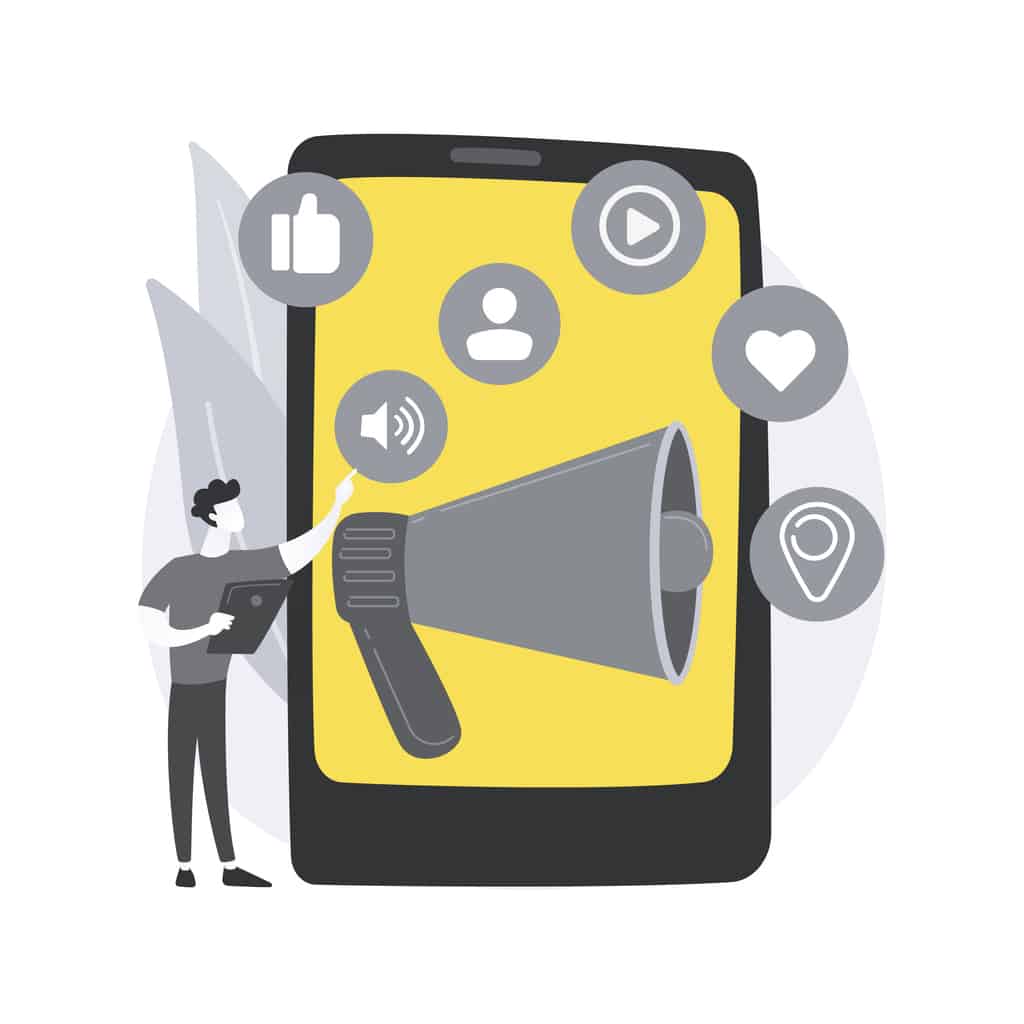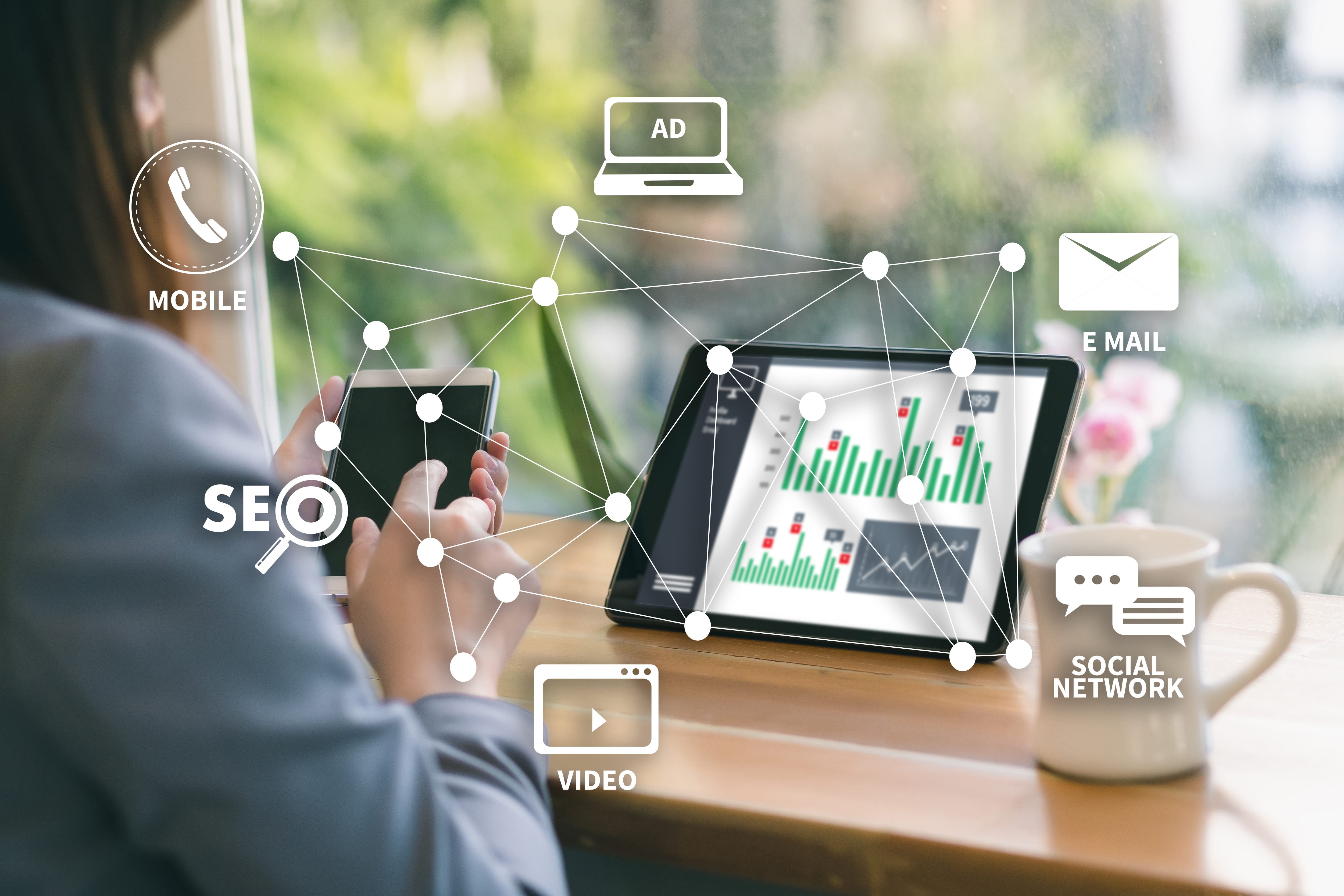- What is Omnichannel Marketing?
- Omnichannel Definition
- Multichannel vs. Omnichannel Marketing
- Omnichannel marketing and the customer journey
- 7 Tips - How to implement an omnichannel marketing approach?
- Omnichannel design tips
- Examples of omnichannel marketing
- Important Differences Between Multichannel & Omnichannel Marketing
- Benefits of Omnichannel Marketing
- Final Thoughts
- Free Resources to understand Marketing concepts
- FAQs
What is Omnichannel Marketing?
The term omnichannel marketing is often tossed around during conversations with marketers. In today’s digital age, marketing is not that simple anymore, with billions of people using various digital devices and platforms to purchase online. Most of the time, these platforms are used simultaneously to make multiple purchases or compare product features, prices, etc. With technology integration in all aspects of our lives, customer expectations have changed as well. Omnichannel marketing helps in offering customers the kind of experience they want across various channels and platforms. In this article, we will explore all about omnichannel marketing, how to implement it, and how it can help increase your brand’s revenue.
Omnichannel Definition
Omnichannel marketing refers to the practice involving marketing practices to customers or prospects using different channels, platforms, and devices. The main aim of omnichannel marketing is to place the customer at the core of the marketing funnel while offering a seamless experience. In the recent decade, omnichannel marketing has grown by leaps and bounds, thanks to the infiltration of the internet everywhere. As per a survey, over 67% of e-commerce companies find omnichannel marketing ‘very’ important to their businesses.
Multichannel vs. Omnichannel Marketing
Multichannel and omnichannel marketing are often used interchangeably, but these are not the same. Both have clear differences enlisted below –
- In multichannel marketing, the brand is the focus of marketing. Although customers can access a variety of communication channels, they are not necessarily connected. In omnichannel marketing, the customer lies at the centre of marketing, and different communication channels are interconnected.
- An omnichannel experience can utilize multichannel marketing, but not all multichannel experiences are omnichannel.
- In multichannel marketing, different channels operate independently regardless of customers, whereas omnichannel marketing is dependent entirely on customer behaviours.
- In multichannel experience, more than two devices/channels are included, unlike omnichannel experience, which involves all devices, platforms, and channels.
Omnichannel marketing and the customer journey
Omnichannel marketing utilises different communication channels to establish brand authority and loyalty. It can be leveraged to design targeted campaigns and reach potential customers.
If you are still scratching your head, let us explain this with the help of an example.
Take the example of Starbucks, the US-based chain of coffee houses. Let us see how they use omnichannel marketing to their advantage in these steps –
- A customer enters their store and gets the promotional message on their app.
- The promotional alert encourages them to make a certain purchase and get rewards such as points or discounts on their next drink.
- If the customers do not buy at the time, the app will consistently push the rewards.
- The app will further promote seasonal drinks to push sales and promote repeat purchases.
Using the customer’s past interactions, behaviours and interests, brands optimize their marketing strategy. You must have also seen this on Facebook and Instagram. Both social media giants promote content based on our interests and likes. However, it is important to create a solid omnichannel strategy throughout the customer journey for measurable results. Hence, an omnichannel customer journey includes multiple touchpoints throughout the customer lifecycle.
7 Tips – How to implement an omnichannel marketing approach?
Omnichannel marketing creates a seamless and consistent customer experience across all channels regardless of the channel they choose. Ensuring that the brand message is coherent across all channels can positively impact the revenue.
Here are 7 tips to implement an omnichannel marketing approach to your business or brand and make the most of it –
- Start with the basics: A successful omnichannel strategy requires a working team who can come together to set up social media and website. Make sure to post and engage with people consistently.
- Analyze customer data: Customer data is at the core of the omnichannel strategy. Create a customer journey map to understand their shopping behaviors, interests, demographics, persona, pain points and so on. Find out what drives your customers to purchase a certain product or what prompts them to make repeat purchases. What challenges do they face? Also, take the help of the conversion data to understand your brand experience from different angles and what is making them drop certain purchases.
- Seek to address customer pain points: Once you have mapped the entire customer journey, look at the reviews to find out where things are going wrong. Is your app glitchy? Does your website take forever to load? Make sure to devise a strategy to address these pain points and improve customer experience. You can also gather feedback by encouraging them to fill out surveys.
- Target the same messages across all channels: The next thing to do is to target a consistent brand message across various channels. You can change how the message is displayed a bit but make sure the intent is the same. Also, avoid using boilerplate content. You can mix and match but avoid looking inconsistent.
- Mobile optimization: Almost everyone has a smartphone today. Mobile sales have grown by 22% from 2018 to 2021, per a survey. Hence, make sure to make all your campaigns optimized for mobile.
- Introduce personalization: Personalization is the buzzword in marketing, and for the right reasons. According to a report by Accenture, 91% of customers are more likely to shop with a brand that delivers personalized recommendations or offers. A successful omnichannel strategy hinges on personalization. Therefore, make sure to use personalized messages with the help of customer segmentation to make the most of your digital marketing. You can leverage customers’ personal details, shopping behavior, customer interaction, and campaign engagement to send personalized messages.
- Test, measure, and optimize: You must measure, test, and constantly tweak your omnichannel strategy to get the best results. As customer expectations change, you need to optimize your marketing campaigns accordingly to fit their changing needs. Make sure to do A/B testing to build a better campaign every time.
Omnichannel design tips
To create a killer omnichannel experience, here are some awesome tips to keep in mind –
- Mobile-first approach: The key to designing a successful omnichannel experience is to keep customers in the center. You can do so by implementing the user-first approach. Meet your customers where they are, and in today’s world, almost everyone is using a mobile. Over 5 billion people are carrying mobile phones and counting. Therefore, it is important to prioritize the mobile channel according to your target market. Make sure that your business has a mobile-friendly website that lets the user experience it on the go.
- Focus on seamless multichannel experience: A fragmented multichannel experience can be the key cause of customer dissatisfaction. Therefore, focus on creating a consistent experience on multiple channels without any bumps. Make sure to synchronize multiple channels not just in terms of look and feel but also the features and functionality.
- Leverage unique features of each channel: Keep in mind the strengths and advantages of each platform and device. Customers should be able to seamlessly switch between a plethora of channels without any hassle. Customers love the flexibility of using different channels simultaneously. For instance, you can enable device-specific functionality to engage with customers in a better manner. You can utilise customer data such as geotagging, past purchases, calendar data, etc. to design a user-focused omnichannel experience. You can give answers to queries in real-time to make them feel valued and also get the chance to convert negative interactions into positive ones. The goal is to lean into the unique strengths of different channels to offer the best user experience and turn them into brand loyalists.
- Keep the brand message consistent: Consistency is crucial to a successful omnichannel experience. Today’s customers do not like abrupt or unexpected changes in their favorite brands. Though it is important to innovate but make sure not to do so at the expense of brand identity. Many companies learn it the hard way. Failure to offer a consistent experience leads to confusion in customers and may impact your sales. Therefore, make sure to build a solid omnichannel strategy that offers a similar experience across all channels. An integrated omnichannel experience builds brand credibility but a disconnected experience often impacts the brand negatively. As you seek to inculcate loyalty in your customers, be sure to create a self-sustaining omnichannel system that broadcasts a consistent brand message across all platforms.
Examples of omnichannel marketing
Let us look at examples of some brands that have pioneered omnichannel marketing –
- Disney: Disney has championed omnichannel marketing like no other brand. For decades, Disney has been mindful of connecting its audience via online, television, and in-person marketing. Their app named My Disney Experience lets users buy tickets for Disney parks, make reservations, store pictures, and do a lot more. As soon as people come to the Disney park, the built-in GPS trace their location and lets them check real-time wait times at the park. The idea behind Disney’s omnichannel marketing is to provide seamless online to in-person experiences to their customers.
- Nordstrom: The online retailers implemented an exemplary omnichannel experience for their customers, especially during the pandemic. The goal is to combine online and in-store experiences in a seamless manner. The brand made it possible for customers to buy directly from their Instagram page. Their loyalty club, known as The Nordy Club, is a great reward program that lets customers get rewarded for their purchases regardless of the channel. The members can track their activity and use reward points on future purchases. Many brands got inspired by this model and implemented it to accelerate profits for their business as well.
- Sephora: The beauty giant is popular among its customers for getting several top brands under one roof. The brand has come up with a website that connects its customers’ online presence to their in-store visits and vice versa. They offer complimentary beauty workshops, makeovers and more at their stores while giving customers access to other amazing features like Beauty Bag. This feature allows in-store customers to virtually try any product using digital software. If they like any product, they can go ahead and buy it as well using the app.
- Pepperfry: Pepperfry is an India-based home furnishing brand that offers a seamless omnichannel experience to its customers by integrating its online store with an immersive experience in its stores. You can access ‘Studio Pepperfry’ to see how the products will look in your space. The tool helps customers get a fair idea, and they can make a purchase without going into the actual store yet enjoy the same experience in the comfort of their homes. Customers have access to Pepperfry design consultants who can help customers find ideal home products and offer relevant design suggestions. Customers can choose to buy the products from the store or via their website so they do not feel any pressure from the salesperson to make purchases in real-time.
Important Differences Between Multichannel & Omnichannel Marketing
Channel vs. Customer
Channel is a customer touchpoint or route via which a product goes to the customer. A customer is an entity that purchases goods from a business or brand. It can be an individual or a business. An example of a customer is someone who goes to the store to buy a refrigerator. An example of a channel is a website through which a customer can browse, select, shortlist or purchase a product online. In omnichannel marketing, all viable channels are utilized to keep the customer engaged. Contrary to that, multichannel marketing uses one or two channels to engage the customers.
Consistency vs. Engagement
Consistent is an important factor in marketing. It implies that you, as a brand, expose your audience to various brand elements in a regular manner. Consistency is highly important to increase brand awareness and build a solid brand reputation. It also helps build credibility among customers and prospects.
Engagement refers to the use of strategic ways to get in touch with customers across various channels. It is an important marketing strategy to create meaningful interactions with customers. There are different types of customer engagement – social engagement, emotional engagement, contextual engagement and engagement of convenience. A successful business or brand strategy involves digital engagement across social media channels to improve customer loyalty and satisfaction.
Omnichannel marketing dictates that consistency is at the core of customer experience. All efforts are made to ensure a consistent customer experience across all channels. However, multichannel marketing does not require consistency to be the driving factor behind customer engagement.
Effort vs. Effortless
In marketing, effort is a term used to describe the resources that a business allocates for the promotion of its products or services over time. With the help of marketing campaigns, a business can invoke interest in its products and create demand to gain visibility among customers.
Effortless marketing is a holistic approach that involves creating smart campaigns to improve its performance. The right amount of automation is used to create strategic campaigns that are intentional but do not look like it. These strategies may take time to create but give dramatic results by garnering instant customer attention.
An omnichannel experience is a form of effortless marketing where marketing campaigns are designed in such a way that customers feel seen and valued. The idea is to move beyond the transactional relationship and make an emotional connection with customers to turn them into brand loyalists for life. Multichannel experiences often require efforts to attract and retain customers.
Benefits of Omnichannel Marketing
It is no doubt that omnichannel marketing has a plethora of benefits for businesses. We have summarised its biggest benefits for your business –
- Boost Customer Loyalty
When your customers have the flexibility to choose from several channels or platforms to make their purchases, they will be happier in the long run. As compared to single-channel campaigns, the omnichannel experience puts customers in focus. The adage, ‘Customer is King’ holds true here. Customers feel valued when they can shop on their preferred platform. No matter how they choose to interact or engage with your brand, they will enjoy a seamless experience. When your customers are satisfied, you will experience lower churn rates. Additionally, satisfied customers are most likely to be loyal customers. Over time, they often turn into brand advocates, which eventually benefits your business. It has been found in a survey that brands who use omnichannel marketing retain over 89% of their customers, unlike those who don’t and get to keep just 33% of their customers.
- Improve Brand Recall
Brand recall is how your customers or prospects are going to remember your brand. It consists of unique features of USPs of your brand that they most associate themselves with. When you leverage omnichannel marketing, your primary goal is to create a consistent experience for your customers. This enables them to recognize your brand quickly across various platforms. Also, omnichannel experiences ensure that you will reach more potential customers wherever they are. Add to that, and targeted campaigns will help reach your target audience further. Customers no longer have to search for you to find you. They will know that you are just a few clicks away. When you consistently engage with your customers across all channels and reach out to prospective ones via digital or offline marketing campaigns, it improves your brand awareness. Over time, you will be able to solidify your brand presence and improve brand recall.
- Realize Increases in Revenue
It has been observed that brands that use omnichannel marketing see a 494% higher purchase rate in 2021 compared to those that used just one or two channels. Also, omnichannel marketing campaigns witness a higher engagement rate than those that do not. When you offer customers the ease and flexibility to purchase on all platforms, this increases the likelihood of purchases and repeat purchases. It is also important that you offer multiple payment options to give your customers more control. This tactic combined with omnichannel experience allows customers to turn into brand loyalists in the long run. When customers engage with your brand across multiple channels like online, in-person, social media pages, etc., you can expect more sales and revenue. Subscription brands can further give customers the option to renew or purchase the product or services again, thus ensuring a recurrent stream of revenue.
Final Thoughts
Do you have an online business and looking to coordinate all channels seamlessly? Consider omnichannel marketing as your digital marketing strategy. It is important to serve across each customer’s touchpoints along the marketing funnel. If you want to serve your customers cohesively and drive more revenue, then omnichannel marketing is the best bet. The future of marketing is undoubtedly omnichannel. It will also help in customer engagement and improve brand awareness across different channels. Make sure to not create an omnichannel strategy on a whim and take customer data into account to make a winning strategy.
Free Resources to understand Marketing concepts
FAQs
An omnichannel approach is an approach that involves improving customer experience by integrating all digital touchpoints. It helps to drive more sales and improve profitability.
The main difference is that omnichannel marketing has a sole focus on customer experience, while multichannel marketing puts business or brand in the centre.
Amazon is a great example of omnichannel. The brand integrates across various digital channels such as social media, mobile ads, newsletters, chatbots, etc. to enhance customer experience.
The main benefit of omnichannel marketing is that it creates a seamless customer experience that eventually translates into more sales and repeats business. Furthermore, omnichannel marketing improves brand recognition and drives a recurring stream of revenue by offering a consistent brand experience across all channels.
Omnichannel is very important in today’s age, where everything is digital and interconnected. Brands that utilize omnichannel marketing experience over 30% higher customer lifetime value and increased annual revenue.






